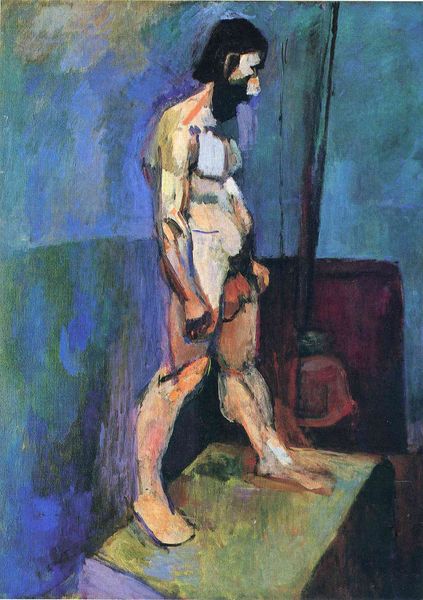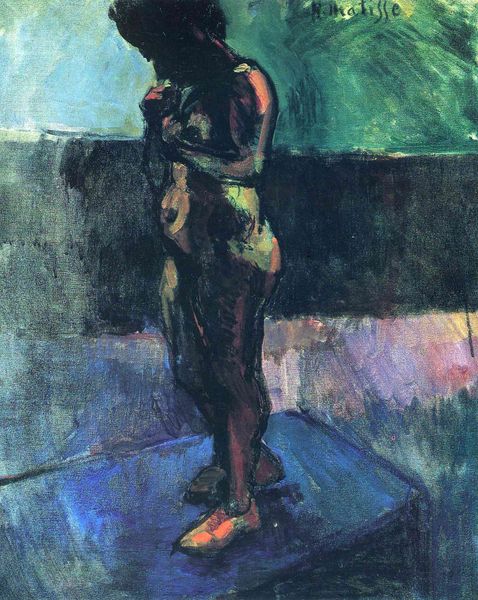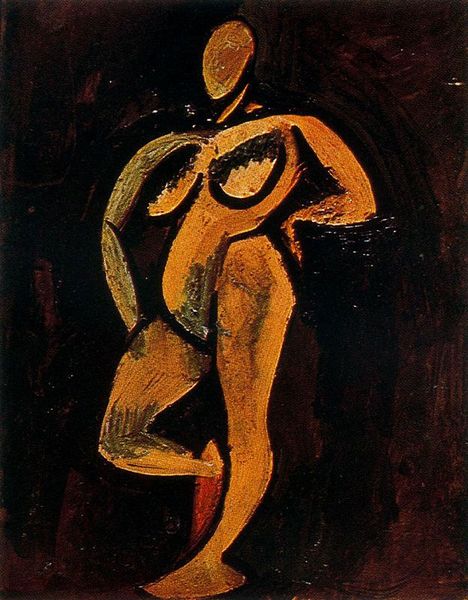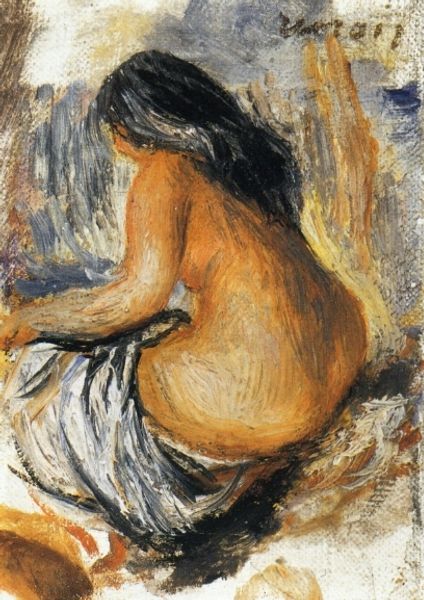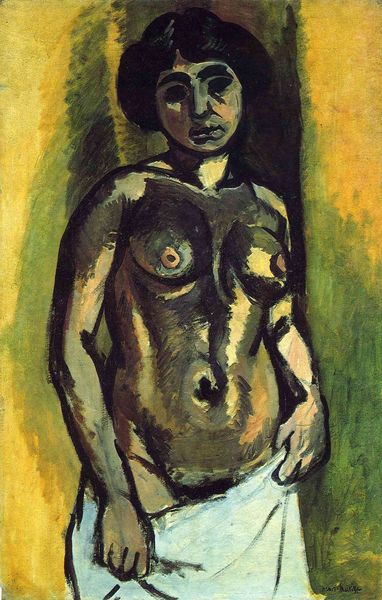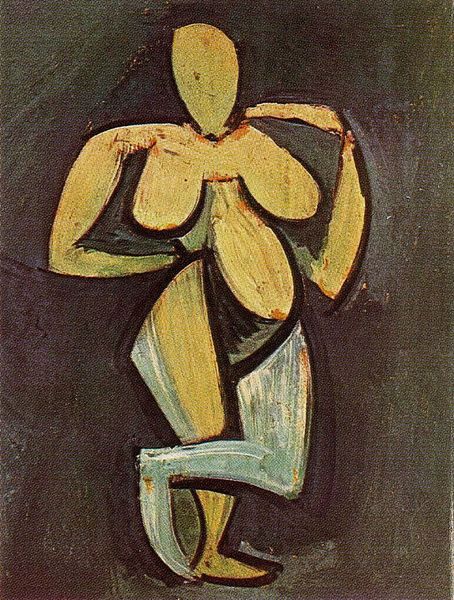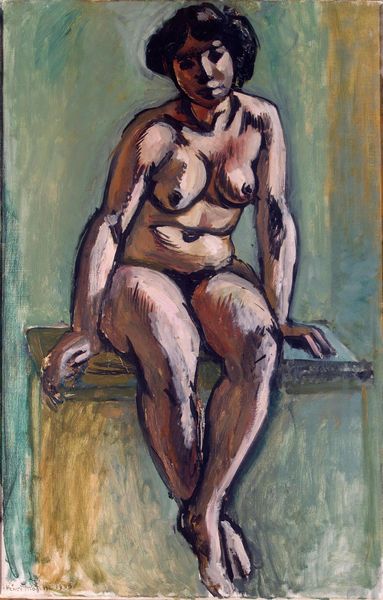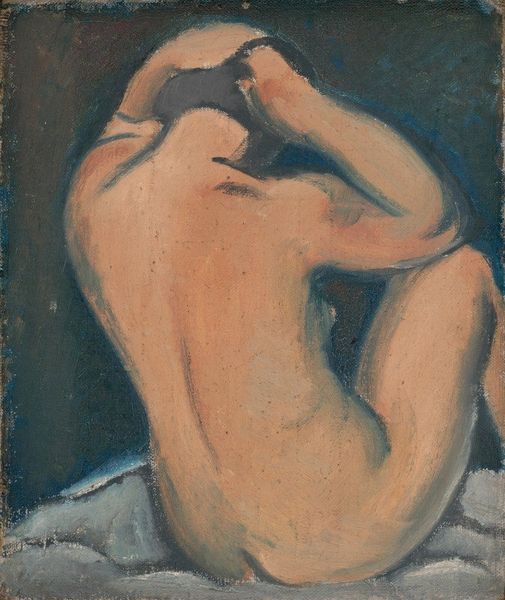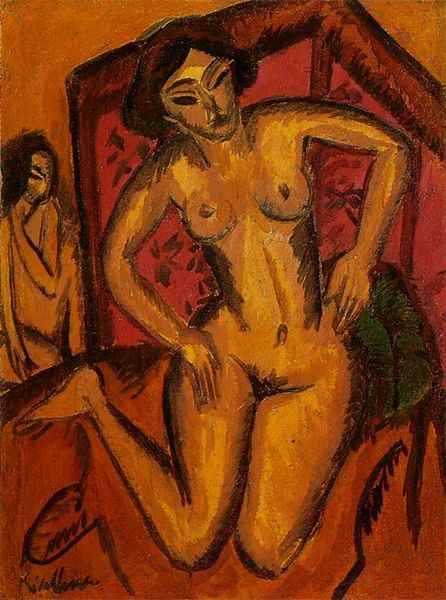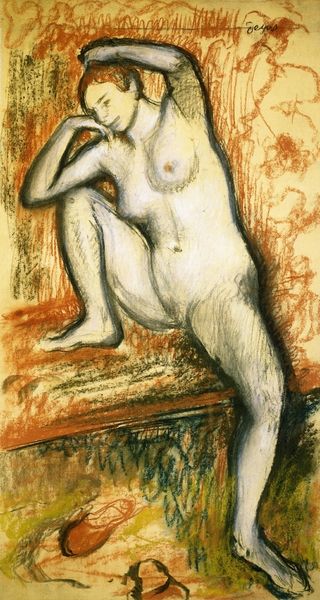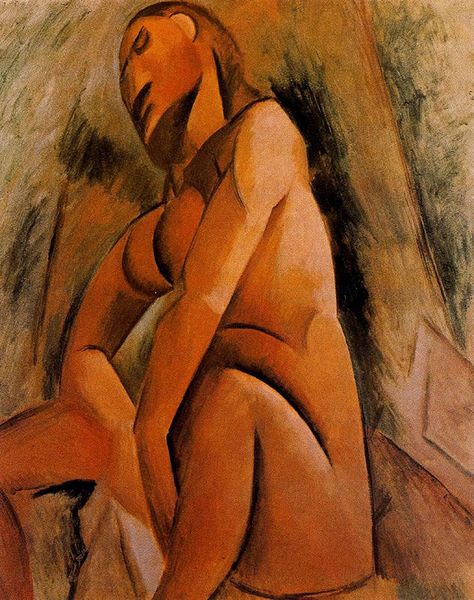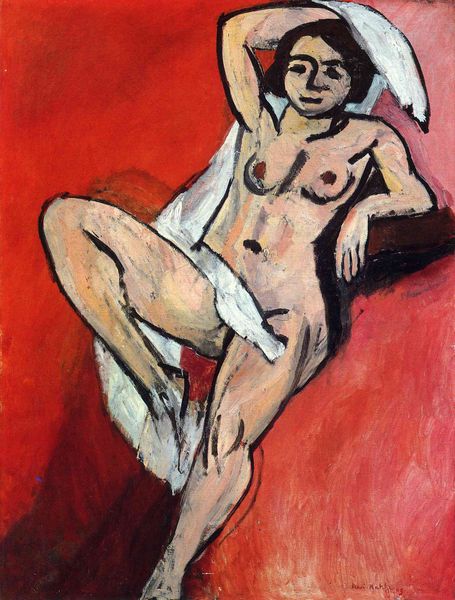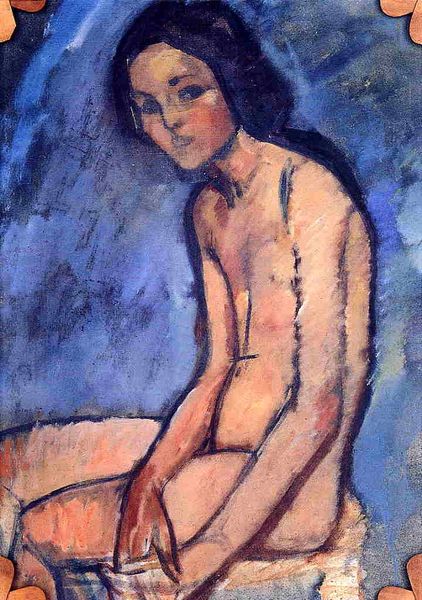
drawing, painting, oil-paint
#
portrait
#
drawing
#
fauvism
#
painting
#
oil-paint
#
figuration
#
oil painting
#
nude
#
modernism
Dimensions: 92 x 65 cm
Copyright: Public domain US
Editor: So, here we have Henri Matisse's "Standing Nude," or "Nude Study," from 1907, rendered in oil paint. It's quite striking with its bold strokes and somewhat somber mood. How do you interpret this work, especially considering the art world at the time? Curator: That somber mood is key. Look at how Matisse uses heavy outlines and simplified forms. This isn't just a "nude study"; it's a challenge to the conventional, idealized portrayals of women that dominated Western art for centuries. In 1907, depicting the body this way—so directly, without romanticization—was a radical statement. What might Matisse be suggesting about the female body, gender roles, and perhaps even colonialism? Editor: Colonialism? I hadn’t thought about that! How does that connect? Curator: Well, consider the influence of African art on Matisse and other Fauvist artists. The simplified forms and emphasis on the raw, "primitive" aesthetic were directly inspired by objects brought back from colonized lands. To what extent is Matisse appropriating, or perhaps, engaging in a visual dialogue with cultures outside of the Western European tradition? Is he celebrating or exploiting? Editor: That’s complex! I see how the painting reflects not only a new style, Fauvism, but also these bigger, uncomfortable questions about cultural exchange and power. I appreciate you expanding my understanding from the purely formal to include broader social and historical contexts. Curator: Art doesn’t exist in a vacuum. By understanding the forces that shaped the artist and the artwork, we can have a richer, more nuanced appreciation, while also acknowledging uncomfortable realities about the historical forces at play.
Comments
No comments
Be the first to comment and join the conversation on the ultimate creative platform.
